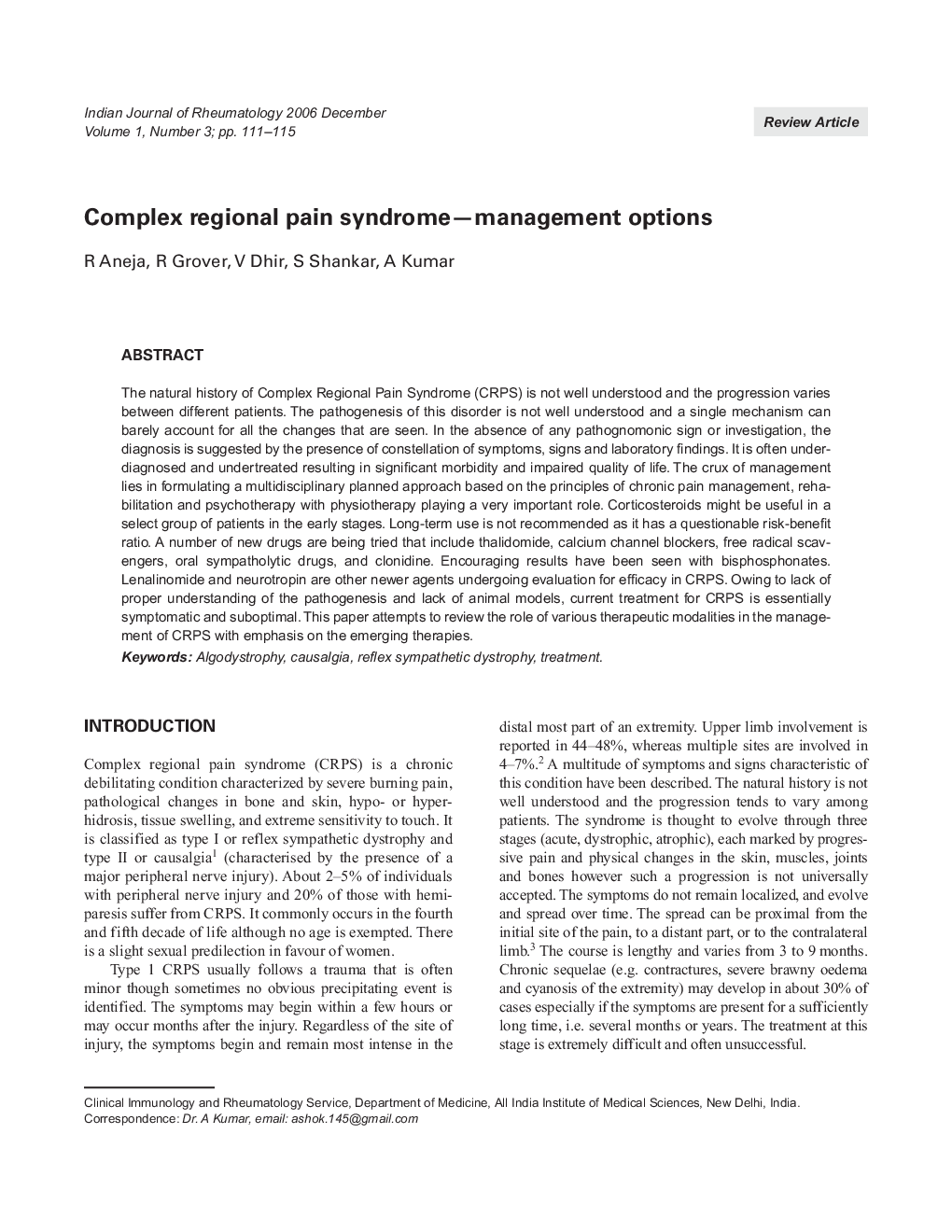| Article ID | Journal | Published Year | Pages | File Type |
|---|---|---|---|---|
| 3357284 | Indian Journal of Rheumatology | 2006 | 5 Pages |
Abstract
The natural history of Complex Regional Pain Syndrome (CRPS) is not well understood and the progression varies between different patients. The pathogenesis of this disorder is not well understood and a single mechanism can barely account for all the changes that are seen. In the absence of any pathognomonic sign or investigation, the diagnosis is suggested by the presence of constellation of symptoms, signs and laboratory findings. It is often under-diagnosed and undertreated resulting in significant morbidity and impaired quality of life. The crux of management lies in formulating a multidisciplinary planned approach based on the principles of chronic pain management, rehabilitation and psychotherapy with physiotherapy playing a very important role. Corticosteroids might be useful in a select group of patients in the early stages. Long-term use is not recommended as it has a questionable risk-benefit ratio. A number of new drugs are being tried that include thalidomide, calcium channel blockers, free radical scavengers, oral sympatholytic drugs, and clonidine. Encouraging results have been seen with bisphosphonates. Lenalinomide and neurotropin are other newer agents undergoing evaluation for efficacy in CRPS. Owing to lack of proper understanding of the pathogenesis and lack of animal models, current treatment for CRPS is essentially symptomatic and suboptimal. This paper attempts to review the role of various therapeutic modalities in the management of CRPS with emphasis on the emerging therapies.
Related Topics
Health Sciences
Medicine and Dentistry
Immunology, Allergology and Rheumatology
Authors
R Aneja, R Grover, V Dhir, S Shankar, A Kumar,
